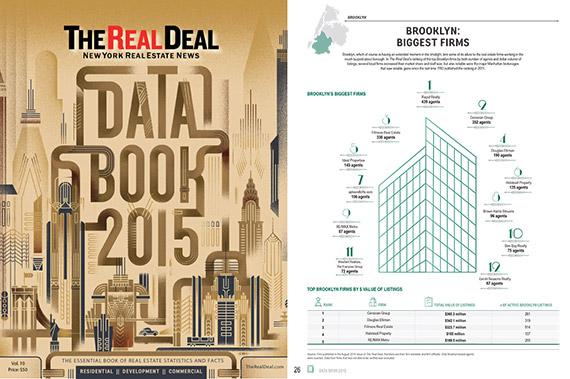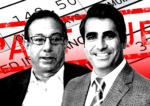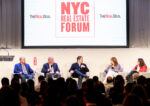Trending
Data Book editor’s note: A tale of three cities
Charts show how NYC real estate is becoming Swiss bank account for global elite

New York today is a tale of three cities.
While Mayor Bill de Blasio ran his campaign centered on the idea of “a tale of two cities,” seeking to bridge the gap between the rich and the poor, I think he was one city short. Namely, he was missing the global jet-setting elite, who are in a different class from the merely rich and the unfortunately poor.
The evidence? The statistics and figures in this year’s Data Book.
Prices at the top reaches of the market are unheard of, with the city’s first $100 million apartment closing at condo tower One57. That building, like many of its super-tall brethren on West 57th Street, has largely been marketed to foreigners looking to buy eight figure pieds-à-terre in the city.
Many of the charts inside show how the city’s real estate is becoming a Swiss bank account for the world’s wealthiest.
Take a look at the record number of $15 million-plus home sales in 2014 (page 42), and the square foot sales prices of the city’s top developments, several times what they were a few years ago (page 81).
Then there is the net worth of our own homegrown New York City real estate billionaires (first place finisher Steve Schwarzman saw his fortune grow $3.3 billion in one year), and the fact that the priciest co-op sales record was broken three times in the last year, with two of the deals involving foreign buyers (page 43).

Data Book 2015
It’s gotten to the point where new homes priced from around $1 to $4 million are called “affordable luxury” by brokers. In reality, what they mean is just housing for those that are only “rich” — which consists of, say, the doctors, lawyers, finance executives and other high-earning professionals that live in New York. Of course, we’ll see how long this trend goes on, given the prospect of the rising dollar and climbing interest rates, and the expectation of more luxury units hitting the market in 2015.
While records continue to be set, we have already seen some cooling for high-end new development sales. But still, the trend might be here to stay. During a trip I took earlier this month to Shanghai (which is the 10th priciest city in the world for luxury real estate, to New York’s sixth — see page 42), I was struck by the same phenomenon. Malls in the fanciest part of town were selling Hugo Boss dress shirts for $500 a pop (more expensive than in New York), while in more working class neighborhoods, you could get a meal of fried dumplings and a drink for under $1. There is pricing for the global elite and then there is pricing for everyone else.
Meanwhile, in this year’s edition of the Data Book, we have a lot that’s new from last year. On the residential side, we have a look at Brooklyn’s biggest brokerage firms and priciest deals, the top new development marketing firms in New York, the most active developers, and a lot more. On the commercial side, we rank the top commercial mortgage lenders, the biggest buyers of retail space and the most valuable retail sites in the city, and much more. As in previous years, this year’s Data Book brings all the biggest players and deals together in one place. The Data Book is the single most comprehensive collection of information on the current New York metro-area real estate market.[vision_pullquote style=”3″ align=”right”] “In New York City today, there is pricing for the global elite and then there is pricing for everyone else.” [/vision_pullquote]
The goal is to provide a leg up for the developers, brokers, landlords, bankers, attorneys, appraisers, architects, reporters, government planners, and finance executives who use it as a resource throughout the year.
Finally, I’d like to thank a few key people without whom the Data Book wouldn’t be possible. First, gratitude goes out to Jonathan Miller of Miller Samuel, StreetEasy and all the others countless firms who shared their quality research. Thanks also goes out to Squat Design for the look of the Data Book this year. (The art deco theme is appropriate given our current Gilded Age.) And lastly, thanks to Sun Yu, who diligently collected research for the Data Book, and to editor Jennifer White Karp, who brought the whole thing together
Enjoy!
Click here to purchase a copy of The Real Deal’s 2015 Data Book, now available in print and for digital download.




